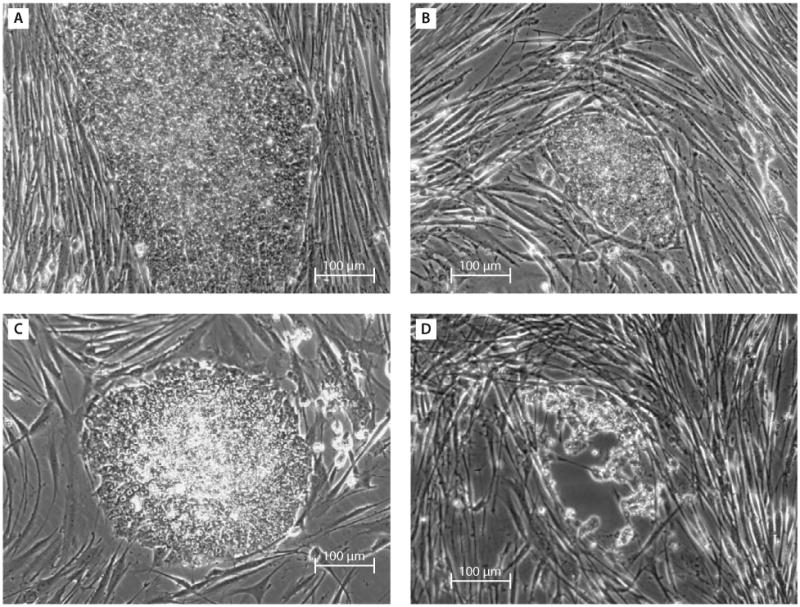Figure 1.

Emergence of embryonic stem (ES) cell-like colonies. Dental pulp stem cells (DPSCs) or stem cells from exfoliated deciduous teeth (SHED) were transduced with the five factors (c-Myc, Klf4, Oct4, Sox2 and Nanog) each carried by the pLenti6.2/C-Lumio/V5-DEST vector system. Trasduced cells were then seeded onto the feeder cell layer of human foreskin fibroblasts (hFFs). (A, B) Twenty-five days after transduction of DPSCs, ES-like colonies began to emerge. However, cells eventually underwent cell death. (C, D) Twenty-one days after transduction of SHED. After being passaged once, shown in (C), cells began dying off 33 days after transduction, (passage 3) shown in (D). Note: pluripotent-associated gene expression was negative in the colonies represented in (C).
